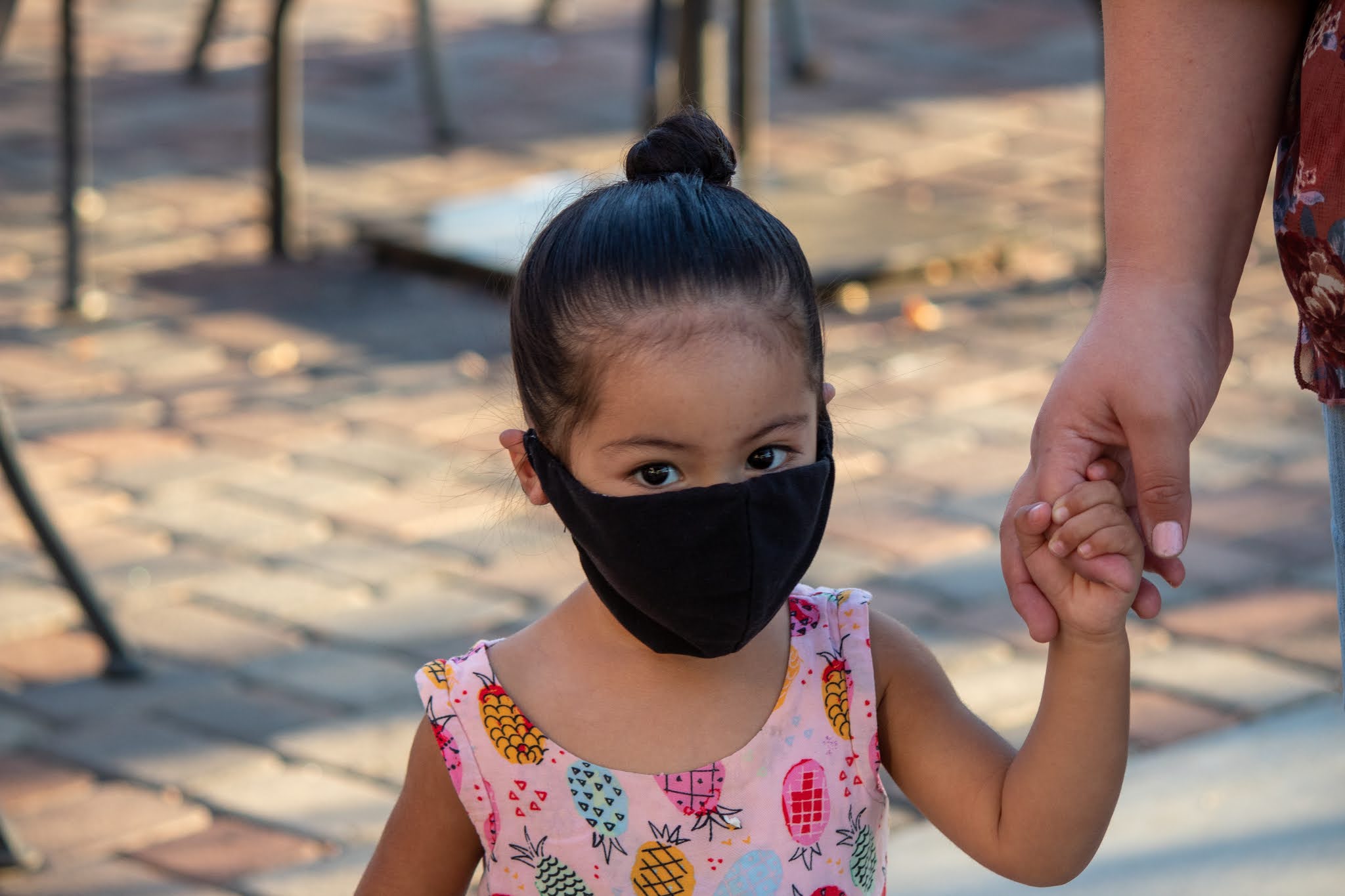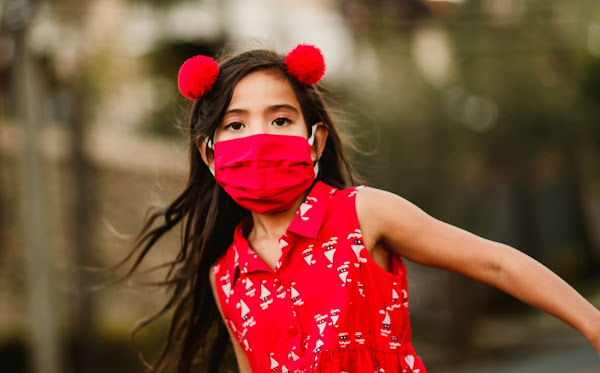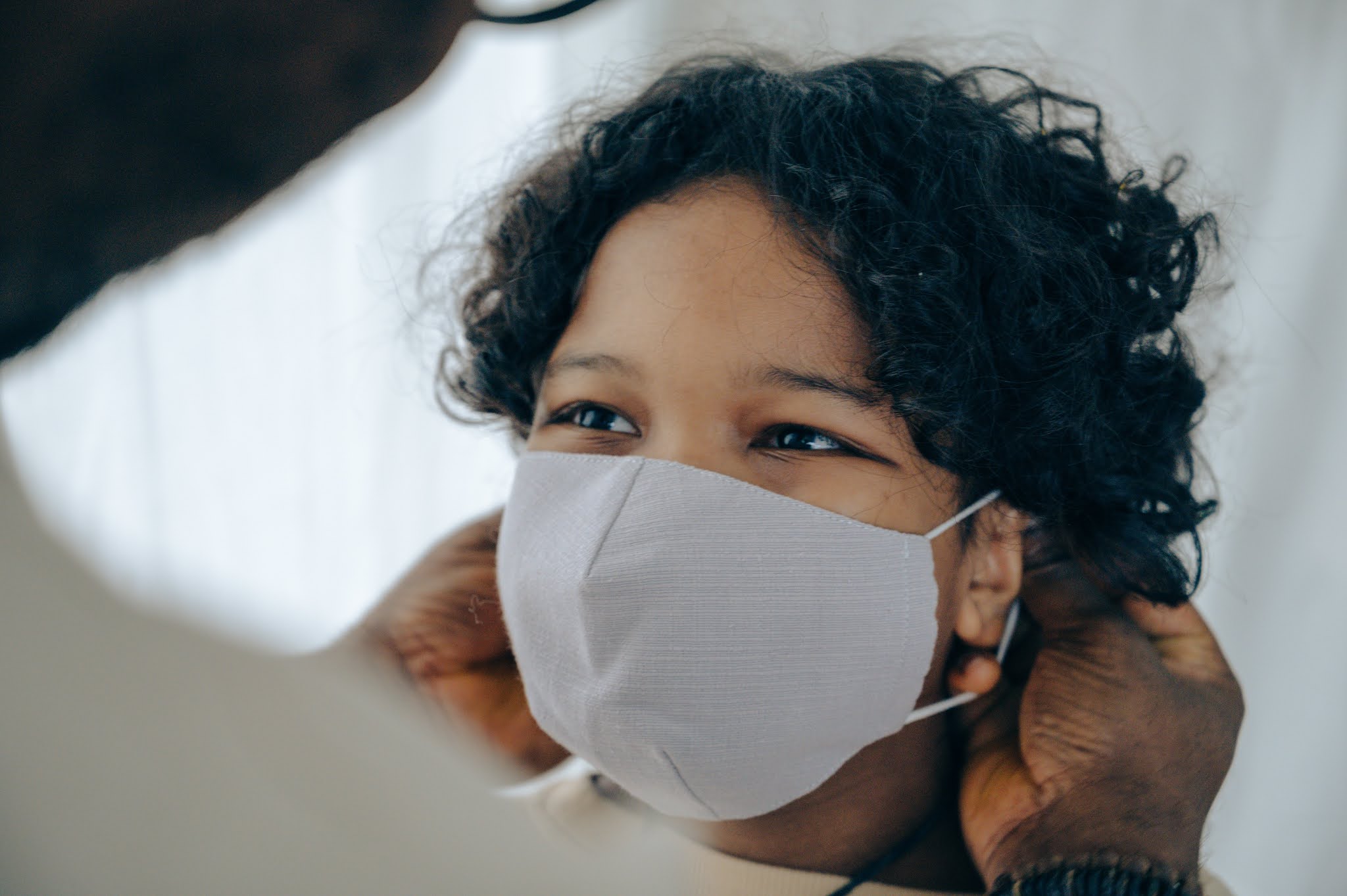Wearing Masks in the Montessori Environment
November 24, 2020

We shall walk together on this path of life, for all things are part of the universe, and are connected with each other to form one whole unity.
—Maria Montessori
To Educate the Human Potential, p. 6
To Educate the Human Potential, p. 6
One way of reducing your concerns and the concerns of your community is to think of how mask-wearing aligns with Montessori principles. As well, integrate mask-wearing into the daily routine and introduce related practical life activities to help your students feel comfortable wearing masks in the Montessori environment.

Mask-wearing, whether we like it or not, is a social movement of moral obligation. In the early childhood years, we stress being kind to all living things. In the elementary years, we help children explore and discover cosmic connections, understanding that all living things on earth rely on each other to live in peace and unity. In 2001, Camillo Grazzini told the 24th International Montessori Congress that “Cosmic Education results in creative attempts to lead a new and different kind of human life, with responsible participation in all natural and human phenomena.” (p 84) As responsible global citizens, is our duty to protect and defend our neighbors. At this time on earth, wearing a mask is a cosmic responsibility.

Practical life activities are a means by which we promote independence and social responsibility in the Montessori environment. Hygienic practices of washing one’s hands, blowing one’s nose, and coughing or sneezing into one’s elbow are generally taught to toddlers and preschoolers and are sometimes reviewed in the elementary years. As children learn these practices, they gain independence over their bodies and contribute to the well-being of themselves and others. Mask-wearing can be approached in the same manner.
Mask-Wearing and Cosmic Education

Mask-wearing, whether we like it or not, is a social movement of moral obligation. In the early childhood years, we stress being kind to all living things. In the elementary years, we help children explore and discover cosmic connections, understanding that all living things on earth rely on each other to live in peace and unity. In 2001, Camillo Grazzini told the 24th International Montessori Congress that “Cosmic Education results in creative attempts to lead a new and different kind of human life, with responsible participation in all natural and human phenomena.” (p 84) As responsible global citizens, is our duty to protect and defend our neighbors. At this time on earth, wearing a mask is a cosmic responsibility.
Practical Life Activities

Practical life activities are a means by which we promote independence and social responsibility in the Montessori environment. Hygienic practices of washing one’s hands, blowing one’s nose, and coughing or sneezing into one’s elbow are generally taught to toddlers and preschoolers and are sometimes reviewed in the elementary years. As children learn these practices, they gain independence over their bodies and contribute to the well-being of themselves and others. Mask-wearing can be approached in the same manner.
Here are a few ideas of activities you can present in the Montessori environment.
- Where to find a mask
- How to put on a mask
- Ensuring correct fit, covering both nose and mouth
- How to remove a mask and where to place it for eating and drinking
- Where to put a mask when you’re done wearing it for the day
Lower and upper elementary students can even learn how to sew masks. These masks can be used as a fundraiser for the school or as a service-learning activity where masks are donated to the community. Whether you decide to provide masks for your students or they are provided by individual families, masks must be washed to maintain hygienic standards and reduce the spread of germs. (Visit the American Center for Disease Control and Prevention (CDC) to learn more.)
While it may seem like mask washing would be a great practical life activity, children should not participate in washing masks to prevent possible contagion.
*The care and distribution of face masks may be regulated by your local government. It is always best to check with your local health services to make sure you are following their guidelines.
Further Reading
Michelle Zanavich — NAMC Tutor & Graduate
🌏 Batman - Biggest Online Toto Site
Batman was inaugurated as an online toto recommendation site with the biggest prizes for you.